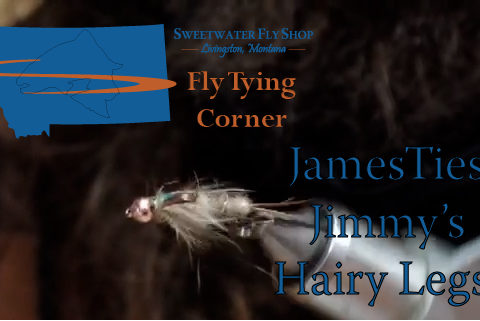Today would be a good day to get out and fish the Yellowstone River or the Paradise Valley spring creeks. Relatively warm, not too much wind…. If you can do it (pesky jobs!), head out today and get a little respite from cabin fever.
A lot of people, including some pretty hardcore anglers, look at me like I’m a little crazy when I tell them that I’ve been out fly fishing in January. But truthfully, the winter months are some of my favorite, particularly for wade fishing freestone fisheries like the Yellowstone River. The water is relatively low, the fish are predictable and generally easy to find, and you almost always have the river to yourself. What more could you ask for? Warm feet, perhaps, but there are always sacrifices, and ways to deal with the cold. Read on.
Winter fly fishing almost forces you to pare things down to the basics. There are no complicated hatches, fly selection is pretty easy, you’re almost always nymphing, and you don’t have to deal with the boat, the shuttle, etc…. Do it right, and you can almost guarantee a catch. Not every fish you catch will be a trout, but heck, the tug is the drug, right? Whitefish are an indicator of good water quality, so cherish them when you pull one in.
The first key to winter fly fishing is preparation. If you can, choose a day that’s above freezing. There’s a macho factor to fishing when the thermometer plunges, but constantly chipping ice off of your guides is a pain, as are frozen fingers. Dress appropriately. Put on lots of layers of wool or synthetics (no cotton!), a wind-proof outer layer on top, heavy socks (with liner socks if you have them), gloves (I like the fingerless kind, with a foldover mitten), a ski cap. Loosen your boot laces so you can wiggle your toes. Bring a thermos of coffee or hot chocolate. If you pack a flask, wait until you’re done fishing to imbibe; alcohol may make you feel warmer, but it will leave you more susceptible to hypothermia. Tuck a small kitchen towel in the top of your waders. When you’re landing and releasing a fish, or otherwise going to get your hands wet, take off your gloves, then use the towel to dry your hands completely before putting your gloves back on.
Next, only plan to go out for a couple of hours in the middle of the day. That’s when the fishing is best, anyway. And always remember that fly fishing is supposed to be fun, not an ordeal. When you find yourself focusing more on your cold toes than on your cast, it’s time to call it a day. Or at least to get out of the water for a while and warm up. Do some jumping jacks, jog in place, whatever it takes to get the blood flowing again. Don’t overstay your welcome; contrary to the belief of many, you don’t get any extra points with the fish gods for enduring misery. And be careful. Watch for thin shelf ice that may protrude out over deep water. If you start to feel light-headed (or heaven forbid, fall in or get wet), retreat to a warm place immediately. Hypothermia can set in quickly, especially when you’re concentrating hard on the fishing.
Where and what to fish? If you can find some ice-free water, you can usually find fish. With the cold water temperatures, the fish will tend to congregate in slower, deeper water. I like knee- to waist-deep water with current moving at about the speed of a leisurely walking pace. The slower water off to the side of the main current can be good, as can areas where a riffle dumps in to a slower run. Tie on a double nymph rig under an indicator, with plenty of weight, and try to hit them right on the nose. They won’t move far for food, and tend to be right on the bottom. Try a bigger, dark stonefly nymph (or small Wooly Bugger) with something a little flashy as a dropper (e.g., Copper John, Lightning Bug). Zebra Midges are another effective dropper. If you catch a trout, keep fishing the same spot; the fish tend to “pod up” this time of year.
If it’s calm, warm, and usually cloudy enough, you may see fish rising. Most likely, they’re taking midges (and they may be whitefish, or they may not; one way to find out). So have your dry fly box and some 5x tippet handy just in case. If the rises are in a run, I’ll usually tie on something that represents a single midge, such as a Sprout Midge. If you find fish rising in slack water or an eddy, you might try a midge cluster pattern, such as the venerable Griffith’s Gnat.
Enjoy the solitude!
Have any of your own suggestions or tips for winter fly fishing? Please leave us a comment!
0




Leave a Reply
You must be logged in to post a comment.